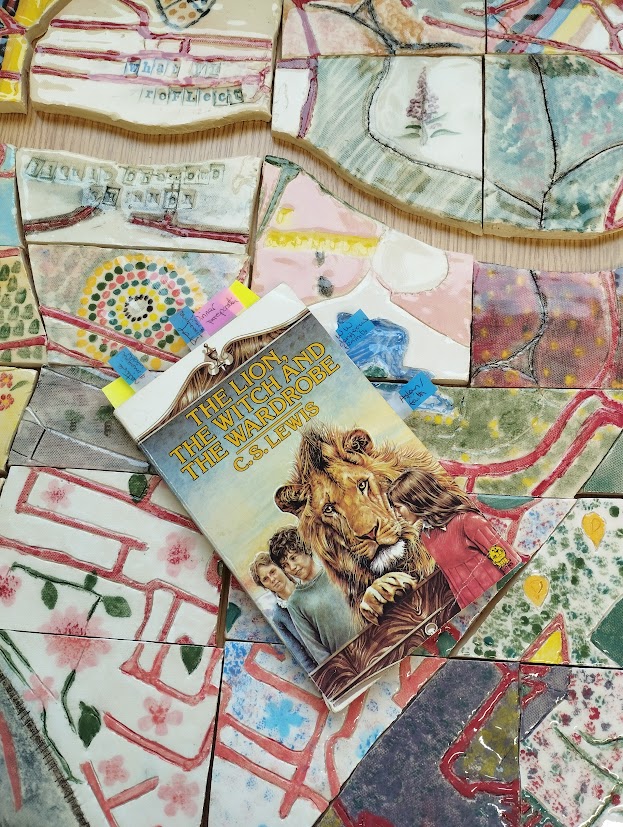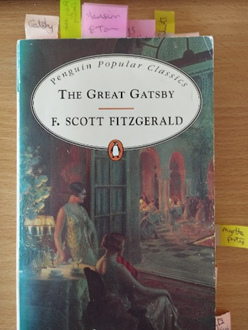I can trace my career as a literature academic back to my childhood days reading, re-reading and re-re-reading C S Lewis’s The Lion, the Witch and the Wardrobe. I was transported, along with Lucy and her siblings, to the magical world of Narnia with its talking animals and existential conflict with the White Witch. I was also enthralled by their escape from the humdrum world of reality, something which all children, I think, yearn for. I dabbled a little in the other six books in the series, but none held my attention like LWW.
And now I find it one of the most satisfying books to teach on our Children’s Literature module. Recently I had the joy of exploring the text with visiting Ukrainian writing students. We had a great discussion which revealed the contemporary resonances of occupation and facing down a tyrant. This week it is 75 years since the first publication of The Lion, the Witch and the Wardrobe.
While it’s always tempting to talk about the realm of the imagination, the magic and the simplistic battle between good and evil, there is so much more to say. There is the context of wartime evacuation and rationing, and the morality of collaboration (Edmund; boooo) and resistance (Aslan; hooray!!!). There is the biblical allegory of Aslan, whose sacrifice and resurrection redeems Edmund (something which we see as adult readers which we may miss as children). Aslan is described as the good news and the light; recognisable from Christian iconography. There are the familiar tropes of children’s literature: adventures without adult supervision; the secondary world of the imagination, where the children can learn important lessons about the adult real (primary) world they are about to enter (for Peter and Susan, the older children); the portal (here, the wardrobe) between these two worlds; and the pastoral world that is an escape from the harsh realities of the mechanistic world of modernity beyond the wardrobe door.
Lewis’s themes tell us much about the time of the book’s creation and the enduring concerns of childhood and its literature. We can see how he smuggles in his Christian message. We can also detect very conventional attitudes to gender, with the boys being brave and active and the girls confined to passive or caring roles. There is also a whiff of colonialism as the exoticised animals wait for the European saviours to arrive and take up their rightful place on the thrones at Cair Paravel. All of the children find the experiences in Narnia transformative, as they learn about personal responsibility, maturity and the expectations of others.
The text is complex in other ways, which we won’t attend to here: Edmund’s betrayal of the other ‘apostles’ at Mr and Mrs Beaver’s house, the White Witch as both a genie (jinn) of Arabic mythology and, simultaneously, Lilith, Adam’s pre-Old Testament first wife in the Garden of Eden. So much to think about, and so little time… But, perhaps, that is where the adventure begins.
Author Archives: msb4@staff.staffs.ac.uk
Gatsby’s Centenary

After a century of dividing students’ opinion, it’s time to take a look at The Great Gatsby, F Scott Fitzgerald’s novel of the Jazz Age, which was published 100 years ago this month. Despite its fame, very little happens: there are a few parties, a few fights and arguments, lots of drinking (leading to the fights and arguments) and, admittedly, a bit of a bloodbath at the end. Instead of plot, the novel is organized around a series of symbols and symbolic moments.
The novel is an exploration of the corruption of the American Dream (a term not coined until 1933 by John Truslow Adams) and the effect that has on a small group of wealthy young people summering in the Eggs near New York City, a fictionalized Hamptons. East Egg is where we find the aristocratic Buchanans – the beautiful but vapid Daisy and her brutal, polo-playing husband, Tom. West Egg is where all the New Money lives – the Irish and Eastern European migrants who have become rich from speculating on the markets and entertainments, but no family history. Gatsby, a poor boy made good through questionable means, was Daisy’s lover before the war, and he wants to return to those times by taking Daisy away from Tom’s philandering. The East-West opposition refers to America’s founding principle of Manifest Destiny; the inevitable settlement of the continent from ‘sea to shining sea’. Our narrator, Nick Carraway, has reversed the journey of West to the Frontier, instead travelling East to try his hand at speculating on New York’s financial markets. Notionally, then, the novel is the story of Gatsby’s battle with Tom for the affections of Daisy, but below the surface it is a tale of value and possession, gender and power.
Gatsby represents the vulgar and quick acquisition of wealth, represented by his lavish house and parties, Tom represents the heritage of the families who founded the nation and accumulated wealth over many generations, typified by his string of polo ponies. Other key symbols include the famous green light at the end of Daisy’s dock (green and insubstantial, like money and value), the God-like but impotent eyes advertising the oculist Dr Eckleburg in New York which look out over the degraded landscape of the valley of ashes and, most importantly, clocks and time.
The narrative compresses the events of one summer into a handful of parties and arguments before (spoiler alert) the deaths of Tom’s lover, Myrtle, her husband, and Gatsby. Most tellingly, Carraway connects the discovery of America and its continental possibilities at Gatsby’s ambitions of rising from poverty to great wealth and the possession of Daisy as a validation of his rise. To do this, though, he must return to the adolescent self she had loved before the ruptures of the Great War. As Carraway stands on the lawn of Gatsby’s empty house, he imagines how:
the inessential houses began to melt away until gradually I became aware of the old island here that flowered once for Dutch sailors’ eyes—a fresh, green breast of the new world. Its vanished trees, the trees that had made way for Gatsby’s house, had once pandered in whispers to the last and greatest of all human dreams; for a transitory enchanted moment man must have held his breath in the presence of this continent, compelled into an aesthetic contemplation he neither understood nor desired, face to face for the last time in history with something commensurate to his capacity for wonder.
…
Gatsby believed in the green light, the orgastic future that year by year recedes before us. It eluded us then, but that’s no matter—tomorrow we will run faster, stretch out our arms farther…And one fine morning—
So we beat on, boats against the current, borne back ceaselessly into the past.
